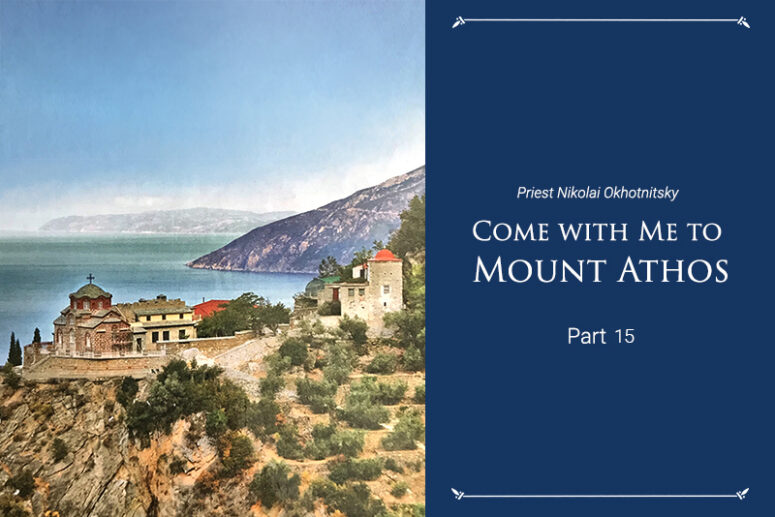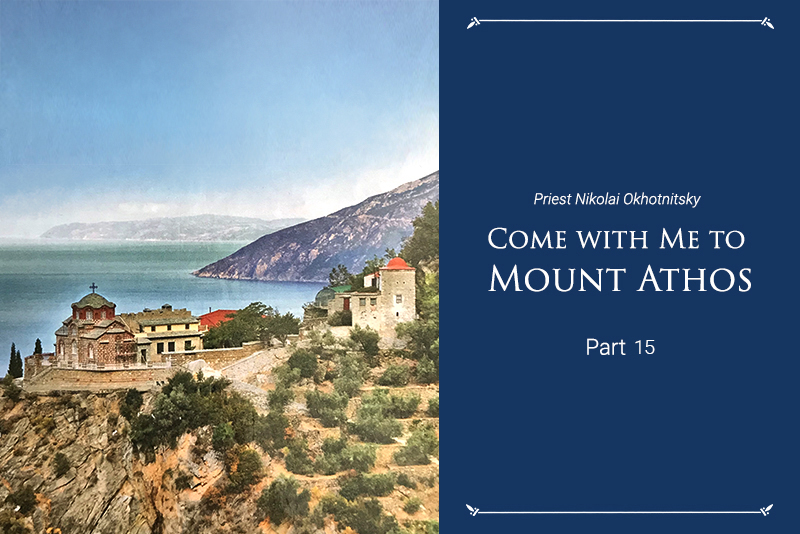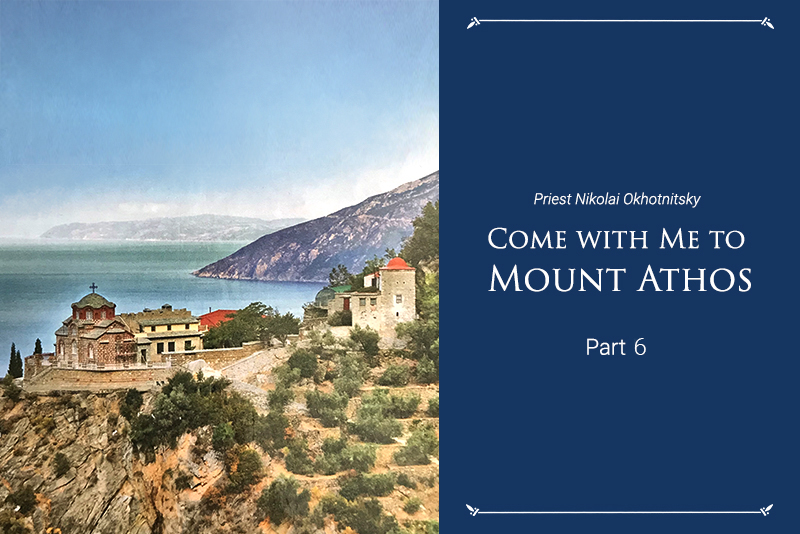
Blessing for the Journey
We got off the minibus and met Father Simon, abbot of Xilurgu Skete. We exchanged greetings and asked for his blessings. It was as if he had come out of the skete only to meet us at the roadside. He was travelling on an errand and was waiting for a ride. To me, he seemed a tall and bulky man with a plain and pleasant looking Russian face.
“Coming on a visit?” he asked,
“Yes – or so it seems… if you will give us your blessing,” I replied. Already, I could see our brilliant plan unravelling. Our first two days were like boot camp for a new soldier. Yet we had little appreciation of our ignorance.
The hegumen looked at the priest’s cross on my neck and said,
– Only the hegumen of a monastery can wear a cross over here. He did not wear a cross. Without a word, I complied, and put my cross away in a box. He asked me if I was father Sergius, muttered something barely intelligible (which sounded like the will of the Theotokos) and said,
– Go to the skete, find Novice Paulin and say that I had given him them the blessing to offer you some tea. You can then go to the Skete of Elijah, or the Pantocrator Monastery if you are willing and able. Alternatively, you may leave your backpacks with us and go their light. He parted with us cordially and hopped into the minibus. I felt my backpack and decided that none of us was fit enough for jogging. So we settled for walking. Everyone walks around Mount Athos.
The walk
We were full of enthusiasm and joy. We were not intimidated by the journey ahead of us. We were bold and fearless. Each of us considered ourselves one of the Athonites. We imagined that we could walk across the Aegean see if they wished. We straightened our backpacks and scurried towards the skete of the Theotokos tapping our walking sticks on the rocks.
“Beware of poisonous snakes,” said Georgievich, putting us back on earth. Fearlessly, we were treading along. Strange plants lined our trail. They were neither bushes nor trees. The fruit on their thorny branches looked like acorns, but their leaves had little in common with the leaves of an oak.
Prayer beads in our hands, we immersed ourselves in spiritual doing as we had planned. Our immersion, however, was not very deep. Curious, we were looking around, hungry for new impressions from Mount Athos.
On the Internet, we found the following description of Xilurgu. Xilurgu Skete of the Theotokos is the world’s oldest Russian monastery. According to tradition, it was established by the warriors of Princess Olga who took her baptism in 957 in Constantinople. The Holy Venerable Antonius, the founder of the Kiev-Pechersk Lavra, took his tonsure here. The founding of this skete established the Russian presence on Mount Athos.” To the best of my knowledge, this narrative has little documented proof, however. Yet it is also an undisputed fact that Russian people have been living in this skete since the 11th century. One highly venerated relic here is the icon Eleusa. There have been reports of several healings of the terminally ill from this icon. It is kept in the skete’s Church of the Dormition.
Novice Paulin, clad in a discoloured inner cassock, was dancing around the refectory table with a huge knife. With great effort and diligence, he was dicing up the marrows and eggplants and putting them on the pan to fry.
“Lord Jesus Christ, have mercy on us!” In every monastery, Jesus’ prayer also serves as a password that distinguishes a monk from an impostor, which we cried out as soon as we crossed the threshold of the refectory.
“Amen,” replied the novice warily as he continued to dice up the vegetables.
“The hegumen gave his blessing for some tea,” we said. “Would you mind if we visited the church to venerate the altar and the icons,” we asked.
Novice Paulin put down his knife, wiped his hands slowly, picked up the keys and walked out of the refectory. We left our backpacks in a covered area outside and toed the line towards the church after the novice. It was small, with several benches against the wall. Prayer seemed to permeate the air. That was only my impression. Yet, having travelled across Mount Athos and visited some 15 monasteries and sketes, this feeling never left me for a minute. At Mount Athos, prayer fills the air. The situation at Mount Athos is not simple. Today is not different from yesterday. The human aspect of the Church is always vulnerable to the weakness of the spirit. This has been discussed extensively in multiple writings. Yet we have come to venerate the Theotokos, and not to hear about the problems or weaknesses, whether real or imagined.
We finished our silent survey of the skete and returned to the refectory.
Paulin turned his head towards the kettle. “Tea is over there,” he said and proceeded to dice up the vegetables. The teabags are on the table, sugar is in the can. Suddenly, he looked up at us sympathetically (or so it seemed to me) and brought us a piece of cheese. We also took out some dried bread and bagels which we left behind for the other people who might want to rest over a cup of tea after a long prayer. We prayed, we washed our glasses and took some water from a well. Paulin explained how to get to the Elijah skete and walked us to the beginning of the path. As we were walking towards Xilurgu, I sensed the reticent novice Paulin making the sign of the cross behind us. As we read in books, no child has ever got himself into trouble if his mother had made the sign of the cross behind him. May God help every monk and visitor here!
Our narrative about our visit to the Russian skete and our experience of its prayerful atmosphere fit into less than two pages. We spent less than an hour there. Back home, I wished that we had stayed there for a day.
Translated by The Catalogue of Good Deeds




